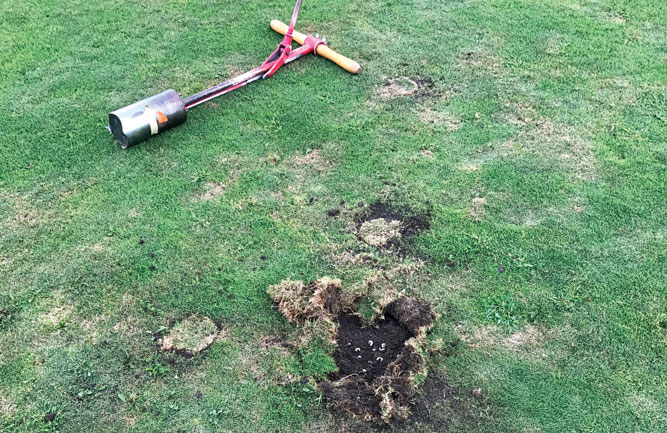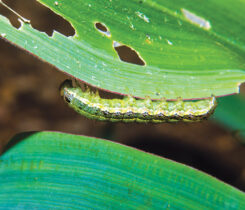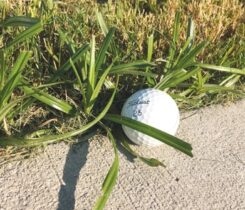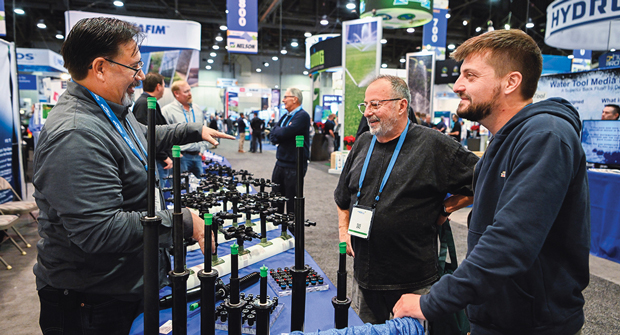Getting to the root of your beetle problem

Doug Richmond
Japanese beetles are primarily found in the eastern part of the United States and about as far west as Oklahoma, says Doug Richmond, Ph.D., professor of entomology at Purdue University. Adults feed on more than 400 different plants. The larval stage of the beetle is most problematic for turf. Adults lay eggs in the turf and as the eggs hatch, the larvae tunnel into the soil to feed.
“They feed on all kinds of things: organic and inorganic soil components and thatch,” he says. “But in the process, they eat an awful lot of plant roots. In doing so, they can damage a lot of turf.”
Turf symptoms
Feeding damage, Richmond says, looks a lot like other grub damage in turf, where the turf presents several different symptoms before its eventual collapse and death.
“The turf becomes an off color, more of a purplish color and starts to become very wilty at first,” he says. “Then it doesn’t respond to irrigation well because there aren’t any roots. Then the turf collapses and turns brown.”

Patches of turf known to have Japanese beetle larvae damage can serve as a litmus test for pest pressure in a given year. (Photo: Doug Richmond)
Richmond encourages superintendents to look for the presence of damage caused by raccoons, skunks or turkeys. He says those hungry animals and birds will typically identify an infestation source before the turf displays any other visible signs of distress.
Monitoring
Richmond says Japanese beetle adults typically lay eggs by late July or early August. The pest tends to favor the same locations every year.
Richmond encourages superintendents to use those pest-prone patches to help predict infestations every year. Monitor those areas and make decisions on treatment based on those patches.
“In a given year, they’re monitoring a patch,” he says. “They say ‘Well, we’re not seeing many Japanese beetles in this patch this year. And this patch traditionally has problems.’ Then it’s very likely that they’re not going to have a problem that year. But if they’re seeing populations that are five, 10 Japanese beetle larvae or more per square foot, then there is a much higher probability that problem is going to be more widespread.”
Treatment
Richmond says if populations are high superintendents should consider insecticide use to protect high-value areas.
“These hotspots are useful for making predictions about the likelihood of seeing damage on a broader scale,” he says.
Richmond says superintendents will often decide to protect just the high-value parts of the course such as fairways and higher-profile rough areas. But, since larvae are feeding below ground, it’s hard to understand just how widespread an infestation may be.
“Acelepryn is probably the most popular control at this point,” he says. “It’s an excellent grub insecticide. We know that it has a good, long residual activity. It gives them a real nice broad window of application. They can easily fit that application into their operations anytime from mid-June until even late August, September, and still get good efficacy.”
Richmond says superintendents may think about preventative sprays with a high rate as early as May. This application would target multiple pests, such as billbugs or black turfgrass ataenius, with one treatment.
While superintendents water in the insecticides to ensure the active ingredient hits the soil, Richmond cautions that extreme rain events may impact how long a residual lasts and what kind of protection the original spray provides.
“If you make an application and within 24 hours you get five inches of rain, is that material going to be there for the long haul?” he asks. “By making early preventive applications, they also open themselves up to the possibility of degradation over time.”












